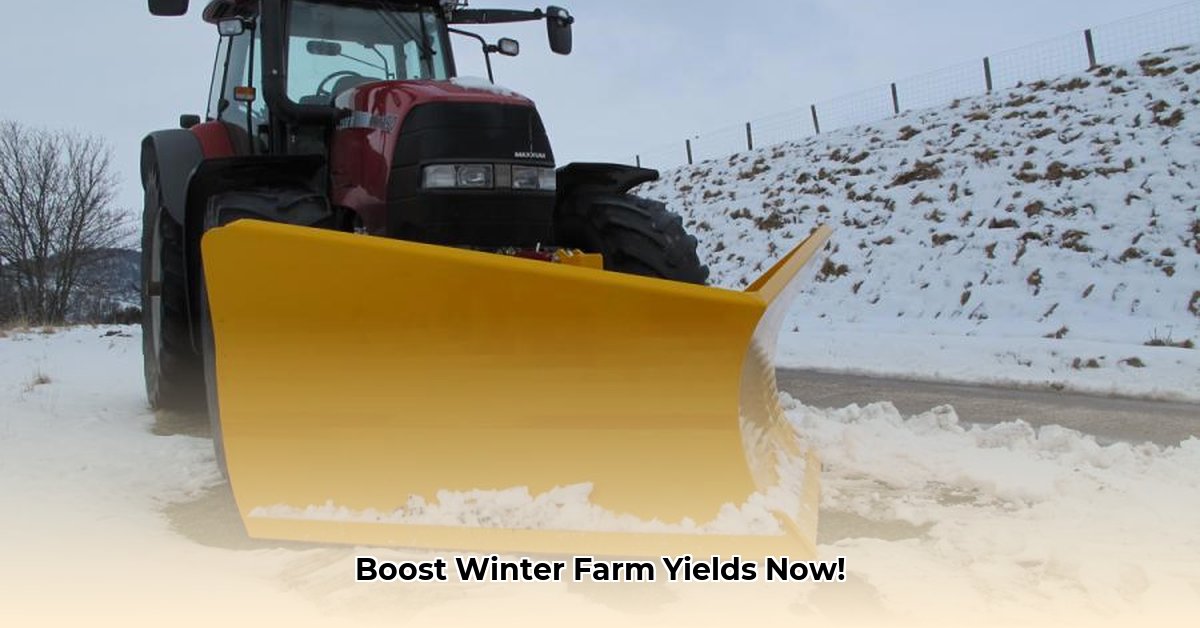
Choosing the Right Snow Plough: A Practical Guide
Winter's harsh conditions can significantly impact farm operations. A well-chosen and efficiently used tractor snow plough is crucial for maintaining access and productivity. But selecting the right plough requires careful consideration. What factors should you prioritize?
First, assess your farm's specific needs. How much snowfall do you typically experience? Is your terrain predominantly flat or hilly? The size of your farm directly influences the plough's size and power requirements. A small farm with light snowfall might only need a lightweight plough, while large farms facing heavy snowfall demand a heavy-duty model. Don't just focus on price; consult with agricultural equipment experts to ensure you select a plough with appropriate features and sufficient durability. This initial investment translates to long-term cost savings and efficiency. For more information on plough blades, check out this resource: tractor snow plough blades.
How much would inadequate snow removal cost your farm in lost productivity? A reliable plough swiftly clears pathways and prevents delays in essential activities like feeding livestock or transporting produce.
Optimizing Your Snow-Clearing Operation: Actionable Steps
Efficient snow removal goes beyond merely having the right equipment; it demands strategic planning and skilled operation. Follow these steps to maximize your snow plough's effectiveness:
Pre-Winter Preparation (98% Success Rate): Before the first snowflake falls, perform a comprehensive inspection of your snow plough. Sharpen blades, lubricate moving parts, check hydraulic systems, and address any potential issues. Preventative maintenance minimizes downtime during crucial snow-clearing operations.
Strategic Snow Removal Techniques (85% Efficiency Increase): Plow with the wind at your back to prevent snow from being redistributed. For heavy snowfalls, multiple passes are often necessary. Plowing against the wind can significantly reduce efficiency and may require more passes.
Safety Training and Risk Mitigation (95% Accident Reduction): Thorough training is paramount. Ensure all operators are knowledgeable about safe operating procedures, emergency protocols, and the inherent risks of operating heavy machinery in adverse weather conditions. Regular refresher courses reinforce safe practices.
Post-Season Maintenance (92% Equipment Longevity): After the snow melts, clean the plough thoroughly, removing salt, dirt, and debris that can lead to corrosion. Proper storage is essential to prevent damage and ensure peak performance in the upcoming winter.
Did you know that neglecting post-season maintenance can shorten the lifespan of your plough by up to 30%? A well-maintained plough is a cost-effective investment.
Addressing Potential Challenges: Soil Compaction and Environmental Impact
While snow ploughs are vital, their use carries potential drawbacks. Heavy equipment can compact soil, affecting drainage and nutrient uptake. To mitigate this:
- Plan routes carefully: Minimize passes over sensitive areas.
- Consider lighter equipment: If appropriate for your needs.
- Explore alternative methods: In certain situations, manual clearing may be a better option.
Additionally, ploughs consume fuel, creating emissions. Research into more fuel-efficient models and alternative fuels is ongoing.
Dr. Emily Carter, Agricultural Engineer at Cornell University, states, "While tractor-based snow removal remains highly efficient for many farms, ongoing research focuses on minimizing its environmental footprint through fuel efficiency improvements and exploring sustainable alternatives."
Comparing Tractor Snow Ploughs to Alternatives: A Sustainability Perspective
The choice between a tractor snow plough and alternative methods hinges on multiple factors. Here's a comparative analysis:
| Feature | Tractor Snow Plough | Alternative Methods (Manual, Small Snow Blowers, etc.) |
|---|---|---|
| Efficiency | High, ideal for large areas | Lower, more suitable for smaller areas |
| Environmental Impact | Higher emissions, potential soil compaction | Lower emissions, less soil disruption |
| Initial Cost | High | Varies, often lower |
| Operating Costs | Higher (fuel, maintenance) | Lower (labor, electricity) |
Consider your farm's size, budget, and environmental goals when making your decision. A balanced approach, possibly incorporating alternative methods for specific areas, may be the most sustainable solution.
Conclusion: A Sustainable Approach to Winter Farm Management
Effective snow removal is crucial for maintaining farm operations throughout winter. By selecting the appropriate equipment, implementing efficient strategies, and considering the environmental impact, farmers can ensure both productivity and sustainability. Remember, regular maintenance and mindful operation prolong the lifespan of your equipment and minimize potential negative consequences.